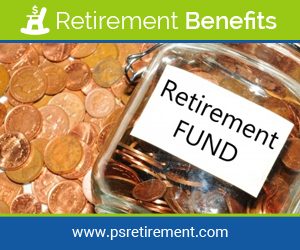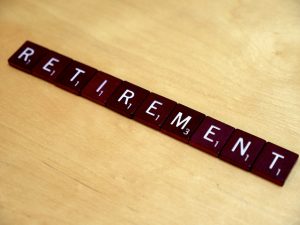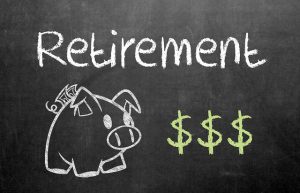retirement benefits
Retirement benefits are the monetary and other benefits and incentives provided to the retired officers and employees of the government.
Health Expenses can Shrink Retirement Benefits: Report
/by AdminA recent analysis done by HealthView Services Company has revealed that most of the retirees will have to spend a lot of money on health and insurance premiums. It also stated that old age leads to many health issues which can further increase the health expenses of a retired couple. The report projected that the healthcare costs would continue to rise in the future as well so retirees must save up for the retirement benefits accordingly.
How Many Dollars Spent on Health would shrink the Retirement Benefits?
The analysis done by HealthView, a leading provider of cutting-edge healthcare software and cost projection software has revealed that today if a couple is retiring; they will need about $288,400 in today’s dollars. It would be spent on Medicare Parts D and B along with the supplemental insurance (Plan F) premiums. The survey assumed that both the partners were 65 years of age.
Out of Pocket Expenses
The analysis also highlighted that there are several out of pocket expenses that need to be included. These expenses were related to dental health, vision health, and hearing health of the couple. When these factors were included, the cost of the same couple’s retirement health care bill was about $377,412.
Increasing Costs
The report also found out that the health care costs of retirees will increase further in the future. The factors that will push the costs are age, health care inflation, and the rising levels of cost shifting. The report was released on Wednesday and it was named as 2016 Retirement Health Care Costs Data Report.
Another Survey
Another similar survey conducted by Brightwork partners and The Empower Institute had revealed that more than half of Americans knew nothing about Medicare costs cutting down the retirement benefits. Just 12% people admitted that they were counting the costs of Medicare while planning for retirement. This survey was done on 4,000 Americans.
The Opinion
The CEO and founder of HealthView Services, Ron Mastrogiovanni expressed his opinion on the matter. He said that just a few Americans are taking some steps to have enough to pay up the medical expenses in retirement. He also added that most people do not even understand Medicare costs. The data they have presented shows that there is a significant impact of increasing health care costs and there is a need for planning for these expenses when you save up to get your retirement benefits.
Over 40 Million Americans Regret not saving earlier for Retirement Benefits
/by Admin A recent survey done by Bankrate.com has revealed that most of the Americans live with financial regrets. They primarily regret not saving enough money for retirement benefits. The other thing they regret is not saving for emergencies. The survey also revealed that people had better financial situations, financial security, and net worth when compared to a year ago.
A recent survey done by Bankrate.com has revealed that most of the Americans live with financial regrets. They primarily regret not saving enough money for retirement benefits. The other thing they regret is not saving for emergencies. The survey also revealed that people had better financial situations, financial security, and net worth when compared to a year ago.
Retirement Benefits and Emergency Savings are Key Regrets
Most of the Americans admitted that they had financial regrets. The percentage of Americans admitting the regrets was 75%. This was revealed in a study done by Bankrate.com. The study also found out that 18% or about 42 million Americans thought they should have started saving earlier towards their retirement funds. The study also found out that about 13% Americans thought they didn’t have enough money to pay emergency expenses.
Age and Retirement Saving Regrets
The survey also uncovered the fact that the Americans who were older had more concerns with regard to not saving up early for retirement. People who were more than 30 years old felt that they should have started saving for retirement early on. About 17% of respondents who were between the ages 30 to 49 regretted it. About 24% of respondents who were within the age range of 50 to 64 had this regret too. The percentage increased to 27% when the respondents were over 64 years of age.
Expert Opinion
The Chief Financial Analyst of Bankrate.com, Greg McBride, CFA stated that most Americans dealt with the financial distress of not having enough savings.
Better Financial Situation
The good news for the Americans is that they got better at other financial factors. The number of Americans who admitted that their financial situation is better than it was one year ago is almost double the number of people admitting that their financial situation is worse. The Financial Security Index of Bankrate.com is at its 2nd-highest reading ever. It is currently 104.7.
About 31% of Americans have also confessed that their net worth is better than it was a year back and just 13% said that it has worsened. The financial security of men and women has improved considerably in the last one year too. Each posted the best readings in over 1 years’ time.
The Survey Subjects
The survey that found out all about the retirement benefits regret and the financial situation of Americans was done on more than 1,000 adults who were living in the continental United States. It was conducted by Princeton Data Source from May 5, 2016, to May 8, 2016.
Retirement Benefits and Stress are interlinked: Study
/by AdminA recent study has revealed that people are very stressed about retirement and yet many of them haven’t started to save up for it by investing in a retirement benefits plan. The reasons why people are doing so are different from not having enough money or not having their priorities sorted out. The study also pointed out that fewer people feel bored after retirement and many of them continue to work because they want to.
Retirement Benefits and Savings
The study was conducted by Franklin Templeton. It was named fifth annual Retirement Income Strategist and Expectations (RISE) study. It revealed that 41 percent of respondents admitted that they are not saving up for retirement. This percentage was 35 percent in 2014.
About 70 percent of the respondents admitted that they were stressed about retirement benefits, savings and investment. This percentage was 67 percent in 2015. 70 percent of people who were within 11 to 15 years closer to retirement were stressed. It demonstrates that when people get closer to retirement, they start taking its stress.
The Problem
The Vice President of Retirement Marketing for Franklin Templeton, Michael Doshier said that though the study didn’t ask people why they were not saving up for the retirement but the general opinion of people is that they can’t afford to or they don’t have their priorities straight. He further explained that retirement savings are similar to diet and exercise. People know that dieting and exercising would keep them fit and yet they find it hard to stick to it.
The study also pointed out that people who take the assistance of a financial expert are saving up for retirement and hence their stress levels are reduced.
Boredom and Retirement
The study also found out that though many people think boredom will be a problem after retirement, it rarely happens. About 34 percent people said that boredom was among the top three concerns related to retirement when they were preparing for it. But when the retirees were asked about it, only 6 percent were worried about getting bored. Most of the retirees were satisfied with their life.
Job after Retirement
About 30 percent of those people who are still working beyond the age of 65 said that they are working because they love their job and they want to work. They were not forced to work due to lack of funds coming in from the retirement benefits or any other reason.
The University of Arkansas Offering Early Retirement Benefits Again
/by AdminThe University of Arkansas at Little Rock has resumed the early retirement benefits provision again. The University had discontinued it for tenured faculty members two years ago. The resumption of the benefits was done so that the programs can become more efficient and the university can save some money. University officials believe that the staffing changes due to this step would not impact students.
The Impact of Offering Early Retirement Benefits Again
 The school’s director of budget and strategic initiatives, Sandra Robertson recently stated that the University officials were expecting that about 25 tenured and 5 non-tenured members would opt for early retirement and it would help the University to save $850,000. But only 11 have applied for early retirement so far.
The school’s director of budget and strategic initiatives, Sandra Robertson recently stated that the University officials were expecting that about 25 tenured and 5 non-tenured members would opt for early retirement and it would help the University to save $850,000. But only 11 have applied for early retirement so far.
The Cost Factor
The University officials admitted that they were hoping that this step would reduce the operating costs of the university and make the programs more efficient. The officials think that opening the option of early retirement is a better method than terminating employees to reduce operational costs.
The Real Savings
The fewer numbers of university members making use of the retirement benefits have reduced the savings amount predicted by the University. It now stands at $500,000. The University has not yet calculated the exact amount of savings generated from the 11 members who have opted for retirement. The savings figure depends on how many of the 11 agreements are approved and how many newly empty spots are filled, says Robertson.
The Numbers
The number of university members who have opted to enjoy their retirement benefits by applying for early retirement is far too low. It’s just 7 % of the 161 members eligible for the early retirement. The total number of the university staff is much higher and the 11 members are just 1% of it.
Retirement Benefits for Early-Retirees
Robertson has stated that the early retirees used to get an early-retirement incentive year-round. This benefit was equal to the nine-month salary withdrawn by a tenured faculty member. Now that the situation has changed, the university is just offering a one-semester benefit to the entire eligible tenured faculty opting for retirement. They would be eligible for the benefit only if they retire before the end of this summer.
Little Impact on Students
The university officials believe that the early retirement and retirement benefits changes of the faculty members would not have much impact on students. Some of the students may miss a favorite teacher but the changes in staffing would have the bare minimum impact on the number of sections and the progress to a degree.
Investment Fees Cutting Down on Retirement benefits of the Millennials
/by AdminThe Millennial Generation is often encouraged to invest more towards retirement benefits in order to get higher benefits when they retire. But things don’t seem to be as simple as that. A recent analysis has revealed that a lot of money invested by the millennials towards retirement savings often ends up towards investment fee.
Retirement benefits Fee too High?

The analysis of retirement investments was done by NerdWallet. The analysis revealed that if millennials pay just 1% towards the investment fee, they would end up losing more than $590,000 as it will be counted as lost returns. The figure is based on the entire course of their savings lifetime.
The Benefits and The Loss
Time seems to give a big benefit to the generation Y. They have the advantage of at least three or four decades to create their own nest egg as compared to their precursors. This time is also an enemy because the investment fees grow with time. The analysis has exposed that the impact of constantly rising investment fees can cut down the retirement benefits of a millennial by over 25%.
The Instances
The analysis was done on a subject who was a 25-year-old person depositing $10,000 in the retirement savings fund every year. The savings account already had $25,000. The subject earned an average annual return of 7%. The person planned to retire after reaching the age of 40 years. Only 1% investment fee snowballed over time as the portfolio of the subject grew.
In one scenario it was seen that a mid-cap mutual fund that had the ratio of just over 1% was to earn $1.77 million after a time span of 40 years. The ETF also grows at a rapid pace. The index-based exchange-traded fund that had the fee of 0.09 percent was to grow to $2.3 million in the span of 40 years.
Fees in Other Vital Plans
A very similar analysis has revealed that a target date fund which is commonly used in the 401(k) plans that had a 0.75% fee were to grow to $1.9 million within the time span of 40 years. A robo-advisor portfolio was to grow to $2.2 million in the same time span.
Impact on Overall Reduction
The analysis also found out that every dollar deducted in the form of investment fee would be one dollar less left to invest in the retirement benefits.
Late Retirement is Good for Health: Study
/by Admin
A recent study has revealed that late retirement is good for health. People who retire at an older age have better health when compared to the people who retired at a comparatively younger age. The study involved subjects who were not retired and the ones who were retired. The study was conducted by following about 3,000 participants who said that their health would not impact their decision to retire.
The aim of the Late Retirement Study
The study was published in the international Journal of Epidemiology and Community Health in the month of March. It was a longitudinal study that was aimed to find the relation between mortality and retirement age among unhealthy as well as healthy retirees. The study also aimed to find out whether socio-demographic factors had an impact on the relation between mortality and retirement age. The study was done for more than 18 years.
The Result of the Study
The study revealed that the healthy retirees who were at least one year older at the time of retirement had 11% less risk of all-cause mortality. The study also divulged that the unhealthy retirees also had a lower risk of mortality when they chose to retire later. The results were independent of a wide range of socio-demographic, health and lifestyle cofounders. It must be added here that a cofounder is a third variable that may be responsible for the correlation between two separate variables.
The Conclusion
Researchers concluded that opting for early retirement may be a risk factor for mortality and the U.S. adults may enjoy a longer lifespan if they have a prolonged working life.
The Subjects
The subjects of the study were about 3,000 participants. About 2,000 of these participants were healthy and about 1,000 were unhealthy. The average follow-up period of the study was 16.9 years. After that duration, more than 12 percent healthy retirees had died. The percentage of unhealthy retirees who died during the same time span was more than 25%. The study only followed those participants who admitted that their health would have no impact on their decision to retire.
The Researchers
The researchers who conducted the study regarding late retirement were from Oregon State University. Psychologist Robert Stawski who was a key member of the team of researchers said that the nature of the work is not important. The people who stay active for a long time maintain mental, physical and social engagement and have a longer life.
Democrats push for more Retirement Benefits Coverage
/by AdminMany democrats are asking the Obama government to ensure that more government contractors are covered under the retirement benefits plans. Those workers who do not have employer-sponsored retirement savings plans must be given the opportunity to invest in government-backed plans.
 Who Wants More Retirement Benefits Coverage?
Who Wants More Retirement Benefits Coverage?
About 65 Democrat leaders want more retirement benefits coverage according to a letter sent to the White House. This group is led by Joe Crowley, who serves as the Democratic caucus Vice Chair. This group wants Obama to ensure that all federal contractors enroll employees working for them in the retirement plans of the company.
The Demands
The Democrats want Obama to create a requirement according to which the full and part-time workers who are not covered under 401(k) options should get access to a new government-run retirement savings plan that was started by the administration recently.
The Unsuitable Trend
Crowley recently made a statement in which he said that about half of the American workers don’t have access to a retirement benefits plan through their respective employers. He added that many more people don’t know about these plans or are ineligible for it. This has led to an unsuitable trend, which shows that less than 10 percent of such workers make a steady contribution to a savings account on their own. Crowley wants steps to be taken to reverse this trend.
The Government’s Role
The Democrats want the government to take some vital steps to solve the problem of retirement plans coverage offered to fewer workers. They want Obama to start with his own employees and capitalize on his executive branch power so that other companies could follow his lead.
The Employers’ Role
The Democrats also want the government to make it mandatory for employers to auto-enroll their employees in the new government-run savings plan if they don’t have any retirement benefits of their own. The new government-run savings plan was started by White House recently and it is known as “my Retirement Account.” It is a platform to invest money for the workers who don’t have access to any other retirement savings option.
The Main Goal
The main goal of all these steps required by the democrats is to ensure that all the U.S. citizens have some savings stored up that can serve them and offer them retirement benefits when they are too old to work.
People of Wyoming Like Retirement Benefits Savings Plans: Survey
/by AdminA recent survey done by Pew Charitable Trusts has revealed that Wyoming workers are more likely to take advantage of the retirement benefits saving plans. The survey also stated that people who are better educated and have full-time jobs have more access to the benefits than the uneducated workers or the part-time workers.
Numbers Speak of Retirement Benefits Savings

The study was based on the figures offered by the Minnesota Population Center. The Minnesota Population Center analyzed the data collected by the U.S. Census Bureau during 2010-2014. The study stated that 63% of Wyoming workers have access to retirement benefits from their employers. Out of that 63%, about 52% participate in the retirement plans. Only 11% don’t participate in it.
On the other hand, nationally, 58% of workers have access to retirement plans but only 49% participate in one. The gap here is 9% only. The reason behind the 9% and 10% gap is that sometimes the employers expect the workers to contribute a portion of their earnings, says the Director of the Retirement Savings Projects at Pew, Mr. John Scott.
Educated Workers have more Access to Retirement Benefits
The survey also revealed that 65% of Wyoming workers who have a bachelors’ or higher degree have the option of signing up for a retirement benefits scheme. On the other hand, just 46% of high school diploma workers of Wyoming have access to these benefits.
High Pay leads to Higher Retirement Benefits
Scott also stated that pay and benefits go hand in hand as far as the retirement plans are concerned.
Full-Time Workers Get Better Benefits
Senior Economist for Wyoming Research and Planning, Mr. David Bullard has stated that Wyoming employers offer better benefits to full-time workers when compared to part-time workers. Data states that about 78% of full-time jobs in the state offer the retirement benefits.
Retirement Plan offered by 30% of Employers
The survey also found out that about 30% of employers offer a retirement benefits plan. The number may seem a bit low, but it covers a lot of workforce population, says Bullard. He also added that as large employers usually offer better retirement plans, most people prefer to work with large employers.
The Prediction
Some local economists are also predicting that the number of people receiving these retirement benefits may reduce due to the current economic conditions but most Wyoming workers would succeed in holding onto their retirement benefits.
Massachusetts State Retirement Board Fails to Pay Correct Retirement Benefits
/by AdminA recent audit has uncovered the fact that the Massachusetts State Retirement Board made several mistakes in distributing the retirement benefits. The people who have been dead for some time were paid the benefits while on the other hand, the spouses of the dead people were not given adequate payments. After knowing of the findings, the agency has initiated steps to rectify the situation which pleased the auditors who found the error.

How were the Retirement Benefits Errors Dug Up?
The major flaw in the distribution of retirement benefits was uncovered by State Auditor Suzanne Bump. The office of the auditor conducted an investigation into the Massachusetts State Retirement Board (MSRB) and found that an amount of about $700,000 was paid to dead retirees. The agency also failed to provide deserving benefits to surviving spouses of retirees.
Why the Error Occurred?
The report submitted by Bump says that the error occurred because the agency did not know of the new requirements to access Social Security’s Death Master File. The responsibility of making the agency aware was with LexisNexis, which was contracted to work with the MSRB. This error led to the distribution of pension to all the people who died during the timeframe of March 26, 2014, and August 31, 2015.
The Numbers
The error resulted in paying up retirement benefits to 105 pensioners who were dead. The error also ensured that 44 spouses of the deceased pensioners did not receive any money of their spouses. A sum of $271,000 was not given to the surviving spouses while $687,000 was offered to people who are dead.
The Rectification
As soon as MSRB and LexisNexis knew of the grave error, they worked to get back a sum of $608,000 that was accidentally offered to dead people. The agencies also worked in conjunction to give away all the deserved payments to the surviving spouses. They have offered almost all the money to the surviving spouses.
The Compliment
Bump was very pleased about the steps taken by the agencies. He said that he was pleased that the MSRB has worked fast to correct underpayments, get back the funds and ensure this scenario never occurs again in the future. He also added that the step taken to rectify the retirement benefits related mistake would play a key role in getting back the public’s trust in government.
Retirement Benefits Shortfall Can Be a Scary Reality
/by AdminA release generated by Moody’s, a renowned credit agency recently revealed that the US government has fewer funds than the required amount to pay off the retirees. Apart from the retirement benefits like FEHB, other programs like Medicare program and social security are also facing a shortage of funds. This shortage of funds can be a serious crisis for the US citizens.
The Hard Facts about Retirement Benefit Shortages

The release generated by Moody’s on Wednesday claims that all governments (federal, state and local) have $7 trillion dollars less than the required amount needed to pay off the upcoming pension payments. The unfunded liabilities of the assorted federal employee pensions systems come around to $3.5 trillion, which is about 20% of US GDP.
The pension systems cover both, military employee benefits and civilian employee benefits. The rating agency also announced that the amount of unfunded state and local government pension plan liabilities is also alarmingly high as it brings the total shortfall to 40% of the US GDP.
Unfunded Social Security and Medicare Programs
The liabilities related to social security and Medicare programs are also high. The social security gap is over 13 trillion, which is 75% of the GDP. On the other hand, the unfunded amount from the Hospital Insurance component of the Medicare program is more than 3 trillion, 18% of the GDP. The overall shortfall of funds for retirees comes down to over 20.4 trillion, which is quite scary.
The Hidden Crisis
Experts like Tony James, Blackstone President, and COO have started raising their opinion on the shortfall and termed it as a “hidden crisis” facing America. He thinks that the shortfall would compel the young people to invest in 401(k) plans that unfortunately are not earning too much. This shortfall may also lead to dire consequences like people having to work until the age of 73 or not retire at all.
The Big Challenge for the Federal Government
A Senior Vice President for Moody’s, Mr. Steven Hess has pointed out that as the aging population is increasing and the sustainability of social security and Medicare programs is highly doubtful, the government would have to face sharp widening budget deficits after 2018. These deficits would not only ensure that there aren’t many funds to pay retirement benefits, it will also harm the recovering US economy.
States where majority doesn’t get retirement benefits
/by Matt Pierce There are many states in America where the majority of the population don’t enjoy retirement benefits and if you are happy with your post-retirement life because you are getting all the benefits that you deserve, then consider yourself a very fortunate person.
There are many states in America where the majority of the population don’t enjoy retirement benefits and if you are happy with your post-retirement life because you are getting all the benefits that you deserve, then consider yourself a very fortunate person.
States with low retirement benefits rates:
Overall, only half of the total full-time employees manage to participate in a retirement plan for their workspace. This has been indicated by many reports that have been compiled for this very purpose. Out of the huge 58 percent of workers who are eligible to enjoy retirement benefits, only 49 percent actually sign up.
Here are the names of the states where the percentages are really low:
Florida: The sunshine state is a name that not many would have guessed of but in Florida only 38 percent of the employees get benefits. This is the lowest of all the states.
Nevada: Around 27 percent of Nevada’s federal employees are working for the leisure and hospitality firms that are amongst the type of employers considered unlikely to provide benefits. Around 40 percent of workers in Nevada participate in retirement plans.
Texas: 50 percent of the Texas workforce is eligible for retirement benefits but around 41 percent of the employees actually participate in the plans.
Among other names are California, Louisiana, Arkansas and Georgia. While other states are considerably better, the overall figure is still not something we can look at with a smile on our face. It’s the duty of the newspapers and departments like OPM to make employees aware and to make employers pertinent as well. Workspaces need to provide employees with more opportunities and when they will be presented with more options, they are likely to take upon ventures that are going to benefit them in the longer run. Here’s hoping that things work out better.
New Federal Budget Will Be Good For Federal Retirement Savings
/by Matt Pierce President Obama has always been one for focusing on federal retirement savings and recent news arriving from the White House indicate that the President will focus on the same matter in the coming budget as well. It’s expected that some new proposals will be put forward that will aid in the expansion of the access to retirement savings accounts provided to the employees. Also, some previous provisions are also expected to be looked at.
President Obama has always been one for focusing on federal retirement savings and recent news arriving from the White House indicate that the President will focus on the same matter in the coming budget as well. It’s expected that some new proposals will be put forward that will aid in the expansion of the access to retirement savings accounts provided to the employees. Also, some previous provisions are also expected to be looked at.
President Obama to expand access to federal retirement savings:
It’s common knowledge that the multitude of the American working class doesn’t care about retirement plans. Around 1/3rd of the population haven’t got a savings or pension available for their post-retirement life and let’s just say that this is a stat that we would like changed sooner than later. Thankfully, the President’s proposals, if accepted, would go a long way in enabling millions of people access to retirement savings accounts.
This increase will occur the most from the legislation that requires the employers that currently don’t have any workspace retirement plan to make the enrolments on the behalf of their employees in an IRA. The employers that would do this would be compensated by 3 thousand dollars in their tax credit. This proposal was part of last year’s budget as well but the Congress didn’t approve it.
This step is destined to make the post-retirement lives of millions of Americans a lot better than they would turn out otherwise. It’s worth mentioning that even though the initiative has been taken by the President, the final approval lies in the hands of the Congress and while the excitement went in vain last year, this year it’s hoped that things might just turn out for the good. This particular plan, once approved is probably going to stay for quite some time.
How to make your retirement savings plan risk-free
/by Admin Retirement plans are talked about a lot these days in workplaces and between federal employees. A good retirement savings plan can go a long way in making a retiree live a prosperous life. Some workspaces provide the facility to invest in a plan automatically but participation is only one step in the right direction. Another thing to remember and pay heed to is the risk management that’s essential. Following are some of the reasons how you should tackle the risks that you might encounter:
Retirement plans are talked about a lot these days in workplaces and between federal employees. A good retirement savings plan can go a long way in making a retiree live a prosperous life. Some workspaces provide the facility to invest in a plan automatically but participation is only one step in the right direction. Another thing to remember and pay heed to is the risk management that’s essential. Following are some of the reasons how you should tackle the risks that you might encounter:
Make your retirement savings plan risk-free:
- How risk tolerant are you?
You are going to have to deal with some degree of risk no matter what the nature of your investment might be. You need be self-aware firstly and this will allow you to choose the investment plan that suits your nature best. You might also be provided with some tools to manage your risk tolerance potential as well.
- Diversity:
Diversification is always desirable. Everybody can benefit from it. Don’t put all of your investments in to one plan and always try to consider a varying mixture of bonds, cash and stocks.
- Regular maintenance:
Maintenance needs to be done regularly as well. IF you need to make sure that you don’t have to deal with any undesirable happening at any time, then you need to make sure that you keep your eyes open and not be naïve all the time.
- Allocate your assets properly:
Always allocate your assets in the best way possible. There are a lot of categories available to invest in and this requires you to divide your assets accordingly.
Savings plan are good for every employee but at times they can also end up hurting you so it’s always recommended to pay proper heed to risk maintenance in this regard.
The Results Are In! Government Has Failed To Properly Train Federal Employees
/by AdminThe results are in! Less than 20% of Federal Employees are satisfied with the retirement training they have received. -75% report receiving no training at all.
Nearly 1 Million Federal Employees were asked to participate in the 2015 Year-End Retirement Survey conducted by PSRetirement.com. After tabulating the responses, and apart from the surprising number of Federal Employees that were left unsatisfied with their training, there were also a few other interesting insights into the retirement training that the Federal Employees are currently receiving.
¾ of Federal Employees Surveyed Report Receiving ZERO Retirement Training
According to PSRetirement.com’s 2015 Retirement survey over 75% of Federal Employee respondents have not had any retirement training at all. Of the Federal Employees surveyed less than 20% of those stating they have received training also state that they are satisfied with the training they received
Federal Employees Prefer One-On-One Retirement Training
Responding to the type of benefit training these Federal Employees would prefer:
- 42.5% of Federal Employees selected one-on-one training as their preferred method
- 29% of Federal Employees chose group training;
- A surprisingly large number of Federal Employees (28.5%) specifically requested interactive online training, which is something that is predominantly unavailable.
One thing is certain Federal Employees believe that their employer should be doing a better job of training employees on their retirement benefits. We happen to agree.
Retirement Benefits of Dead Mother Stolen by a Philly Man
/by Matt Pierce There have been many cases in the past few years when people have claimed to be someone they were not and ended up making a lot of money by skimming from the government. Recently a man from Philadelphia was found guilty of committing a really heinous and derogatory crime. What he was trying to do was this: Get his hands on the retirement benefits that would have been given to his mother; to add to the insult, his mother was dead. This charging was announced by Zane David, who is the US attorney.
There have been many cases in the past few years when people have claimed to be someone they were not and ended up making a lot of money by skimming from the government. Recently a man from Philadelphia was found guilty of committing a really heinous and derogatory crime. What he was trying to do was this: Get his hands on the retirement benefits that would have been given to his mother; to add to the insult, his mother was dead. This charging was announced by Zane David, who is the US attorney.
Philly guy tries to steal retirement benefits of mother:
The person, Anthony Cooper is 67 years old and is now being charged with the “Theft of government retirement funds” for apparently skimming off around 70 thousand in retirement benefits. The startling fact about this matter is that he didn’t get the money for a month or two, he continued to skim for a long time; specifically from February 1991 and up till December 2011.
In this regard, Anthony is set to face prison time that could amount to as much as 10 years. This may include around 3 years of release under supervision, if he is actually found worthy of conviction.
The case was investigated by the Inspector general of the social security administration. The prosecutor for the case is Christopher #. Parisi who is the U.S Attorney’s special assistant as well.
Cases like these really make a person think about the state the country is currently in. The government and the investigating team should be lauded for the efforts that they had to put in order to ensure that the culprit was first found and then prosecuted in the court like he deserves. Here’s hoping that such culprits get caught a little faster in the future and not after they have enjoyed undeserved government funds.
Employers and retirees disconnected over medical retirement benefits
/by Matt Pierce
Recent surveys have ended up revealing that there exists a substantial gap between what the medical retirement benefits actually turned out to be for the retired officials and what they were told about them by the employers when they were about to retire. The results of the survey were overall very staggering and the best depiction of this fact is that around 43 percent of the retired officers that were surveyed said that their employers had offered them no guidance whatsoever and they had to figure things out for themselves.
Disconnection over medical retirement benefits:
The survey was started in September of last year by a company named Towers Watson. It encompassed around 144 HT executives and normal officers. During March of this year, the company also managed to survey around 3800 employees that were aged 65 or more and had previously worked at similar organizations as their employer counterparts of the previous year’s survey.
Other revelations from the surveys are also pretty awe-inspiring. Around 34 percent of the retirees revealed that their employers told them about the costs that are not covered by the subsidy of the employer. Around 53 percent of the employers said that they had made their employees aware. Around 20 percent of the retired officers revealed that they were told about financial planning possibilities and other mechanisms that would have helped them understand the medical retirement benefits and the processes involved better. Around 41 percent of the employers that took the survey claimed that they had told the employees about this.
The thing that startles you the most is that there are stark differences in the answers given by the employers and the employees and things don’t add up. This does leave a person thinking and we would have to see what the experts have to say about this disconnection.
Wilson’s Search For Retirement Benefits Sees Reaction
/by Admin Mayor Jim Ferrell’s Chief of staff Brian Wilson is one of the talking points in the newspapers these days and it’s no secret that he is the city’s highest paid federal employee. He garnered some newspaper fame when he made public that he was looking to get his hands on some retirement benefits that he naturally deserves. He got hit by a barricade of criticism when it was found that he was trying to complement his 147,888 dollars salary by a figure that’s close to 80 grand of retirement salary.
Mayor Jim Ferrell’s Chief of staff Brian Wilson is one of the talking points in the newspapers these days and it’s no secret that he is the city’s highest paid federal employee. He garnered some newspaper fame when he made public that he was looking to get his hands on some retirement benefits that he naturally deserves. He got hit by a barricade of criticism when it was found that he was trying to complement his 147,888 dollars salary by a figure that’s close to 80 grand of retirement salary.
This is something that could be considered surprising for the normal public or for some of the other federal officers but as critics have spoken: The city council should have been aware of this because Mr Wilson had already been receiving two handsome retirement benefits from the city; both accumulating to be around 25000 dollars in future allotment.
Wilson’s retirement benefits’ search a problem for City hall?
The problem currently faced by City Hall is of great significance. It is more political than it’s anything else and this can lead the general public to conclude that this demand by the highest paid city employee is against the norms and standards of city hall. Having said this, it becomes evident that this will cause serious problems when Mayor Jim steps up for the re-election in 2017 along with other members from the city council.
Wilson’s request was turned down and there was a mentionable reason for that. His request was made as a retiring chief of police. The state made the rejection because technically he wasn’t retiring at all. All he was doing was changing jobs to now become a chief of staff. The state’s verdict was simple: these benefits are solely meant to help the retirees and there is no reason why people that are making changes in their job description should be getting these.
The Story of Federal Retirement Savings Getting A Bump
/by AdminSlight Bump in Retirement Savings
Recently an announcement was made according to which there would be no cost of living adjustment made in the retired federal officers’ benefits. This has only been done for the third time in over a span of 40 years. The retirees will thereby not be seeing an increase in their benefits which is something that’s really striking to say the least. Having said that, compared to this, the pay raise that the Federal employees got (from 1 percent to 1.3 percent) looks very handsome.
This is a matter that has divided the community and people are having polar remarks about this move. The congress has been keen to stress on the fact that they are not being ignorant to the financial demands and request of the federal employees. The senate has recently agreed to pass a bill that is going to make the collection of federal officer retirement payments by anybody other than the employee themselves illegal. This prohibits the misuse of money and prevents any further liquidations of the fund money to cash.
This is a step that can be looked at positively and the head of the Senate’s security department, James Lankford said that according to him, now people will at-least have to think twice before they actually go ahead and commit identity fraud on a federal employee that has retired. When you look at it that way, he does make sense but there have been large voices being made heard by many critics who are stressing on the fact that even though the government hasn’t increased the percentages for the plans of the retired officers, they have claimed to make identity fraud a lot harder when in truth it is still achievable.
There are two sides to each story and we just presented you with both. Believing and forming an opinion is strictly down to the readers.
Retirement Benefits to get Altered in 2016
/by Admin2016 Retirement Benefits Changes

There are many changes that are expected to be brought about in the next fiscal year of the country. The officers that contribute to their retirement benefits will get more choices now for participation as myRA has been introduced. Apart from this, there will be lesser options to claim the social security funds for all the married federal employees (couples). Apart from this, the premium fund of the Medicare has also seen some increase. Let’s shed some light on how the retirement saving plans are set to get altered in 2016:
- You can’t claim your social security after you have done it once. There have been cases where elderly people (66 or above) have been observed to claim their social security benefits a second time. This happened as the first time, they could just go ahead and collect the social payment of their partner and then later on they could receive the benefit that was owed to them by the federal government. In heed of this, no elderly married couples are going to be allowed to claim social security twice in their life tenure.
- There has been much noise made about myRA. It’s indeed a new and innovative way of adding funds to your retirement bucket. It got launched in the beginning of the year and there is no hidden fee or any charges that are deduced from the opener’s account. You can only invest in it in one way: via the treasury savings bond with an interest rate that varies over time.
There are some other alterations made in this regard too so if you are a federal employee currently thinking about your post-retirement life then you need to take serious interest in how you are going to be managing your current salary after making some adjustments and contributions to your retirement fund.
Defending Public Safety Employees’ Retirement Act Enacted
/by Tamila McDonaldDefending Public Safety Employees’ Retirement Act
Certain former and current federal employees can now access their retirement benefits earlier than traditional retirement accounts allow for without fear of repercussions. The president signed and enacted the Defending Public Safety Employees’ Retirement Act on June 25. This bill allows current and former employees to access the federal employee retirement system to withdraw funds as early as the age of 50, without penalty. Typically, individuals can only access their retirement benefits at 59 1/2 without incurring an early distribution tax penalty.
The Defending Public Safety Employee’s Retirement Act
The Defending Public Safety Employee’s Retirement Act allows early retirement benefits to be distributed as early as age 50 to those who have worked as enforcement officers, firefights and air traffic controllers, according to a copy of the bill. The bill stipulates that those currently of formerly participating in these forms of federal employment be allowed early access for various reasons. Other individuals face a 10 percent penalty.
The bill also stipulates that the restriction on allocations from government retirement plans labeled as benefit plans are the only plans to qualify for early withdraw. As an added measure, the bill prohibits the Internal Revenue Service from treating the change to equal payments as a reason to increase the early-withdraw penalty. Qualified current and former federal employees can begin taking early distributions without penalty as of December 31, 2015. The bill does not extend the exemption past these specific organizations. All other individuals could face a tax and penalty fee on early withdraws as is typical for all retirement plans.
Federal Retirement and Withdrawal Rules
Current retirement withdrawal qualification is based on your minimum retirement age. Employees born between 1948 and 1952 can typically begin withdrawing pension benefits sometime during their 55th year, while individuals born after 1970 must wait until the age of 57 to qualify. Additionally, no matter which federal organization you work with, your FERS benefits will be reduced based on the number of years you served and your withdrawal age may increase. As a general rule, to qualify for early withdraw, with no fees, you must have worked for the federal government for at least 20 years.
The Public Safety Employees Retirement Act did not stipulate whether employees in the qualified positions were also exempt from the 20-year service qualification requirement. Federal Employees can use the retirement calculator to determine how much their benefits will be to be at the age of retirement. The Office of Project Management features several retirement calculators including: a General Schedule calculator, Federal Ballpark Estimate, Federal Withholding Calculator and Tax Free Annuity Calculator to help federal employees properly prepare for retirement.
Reductions and Early Withdrawal Fees
Employees that opt to take an early retirement may qualify for a reduced or waived early-withdraw fee. However, they also face a reduction of annuity payments totaling 5 percent per year for every month the employee is under the age of 62. To avoid the reduction, check out the Office of Personnel Management website or work with a qualified financial professional to determine your minimum retirement age and plan to receive benefits after that age.
Federal Retirement Related Articles
Defense Bill Sets the Ground for Federal Employee Payscale and Performance Changes
No COLA Increases in Social Security Benefits
Planning for your Federal Retirement by Todd Carmack









